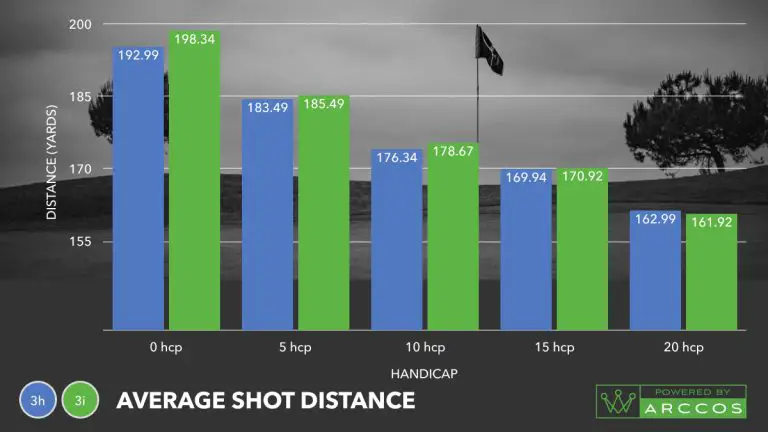Why Are Golf Courses Called Links
Have you ever wondered why golf courses are often referred to as “links”? The term “links” holds a rich history and significance in the world of golf, representing a specific type of golf course known for its unique characteristics and challenges. In this article, we will delve into the origins and meaning behind the name, uncovering the fascinating story of why golf courses are called links.
The term “links” finds its roots in Scotland, the birthplace of golf. It refers to the sandy, coastal terrain where early golf courses were established. These courses were traditionally located along the coastlines, utilizing the natural landscape and sandy soil to create challenging and visually stunning playing fields.
The connection between links courses and coastal areas is not a coincidence. The coastal location influenced the design and features of these courses, incorporating elements such as sand dunes, tall grasses, and natural hazards shaped by the wind and tides. The term “links” became synonymous with these coastal golf courses, representing their unique characteristics and style of play.
Throughout this article, we will explore the historical origins of links courses, their distinct features and challenges, and their enduring influence on the game of golf. By understanding the significance of the term “links,” we can deepen our appreciation for these remarkable courses and the traditions they represent. So join us on this journey to uncover why golf courses are called links and discover the allure of these captivating playing grounds.
/carnoustie-links-course-5a01fe63b39d0300196a00ca.jpg)
The Origin of the Term “Links”
The term “links” finds its origins in the Scottish landscape, where golf has deep historical roots. The word itself refers to the sandy, coastal terrain that characterizes these courses. We’ll delve into the early usage of the term and explore its etymology to better understand its connection to the world of golf.
Characteristics of Links Golf Courses
Links courses possess distinct features that set them apart from other types of golf courses. We’ll examine these characteristics, including their natural coastal landscapes, sandy soil, and undulating terrain. Understanding these elements will help us grasp the unique charm and challenges of playing on a links course.
Connection to Coastal Land and Dunes
The geographical association between links courses and coastal regions is not a coincidence. We’ll explore how the proximity to the coast shapes the design and aesthetics of these courses. The presence of sand dunes and the influence of the elements add a touch of drama to the playing experience.
Historical Evolution of Links Courses
Links courses have a rich history that dates back centuries. We’ll take a journey through time, tracing their evolution from rudimentary playing fields to organized golf courses. Along the way, we’ll explore the pivotal role of early golfing communities and the establishment of iconic links courses.
Links Courses and Golf Tradition
Links courses hold a special place in the traditions and lore of the game. We’ll delve into their historical significance and examine how they have become synonymous with the heritage of golf. The stories and legends that surround famous links courses will provide insights into their enduring appeal.
Links Course Challenges and Strategy
Playing on a links course presents unique challenges that demand a different approach. We’ll analyze the impact of factors such as wind, uneven terrain, and fast-running fairways on the game. Strategies and tips for tackling these challenges will be shared, helping you navigate your way to success on a links course.
Modern Interpretations and Design Influences
While links courses have their roots in Scotland, their influence has spread worldwide. We’ll explore modern interpretations of links-style golf and the incorporation of traditional links features in contemporary course design. Discover how designers have embraced the links aesthetic, even in non-coastal locations.
Micro-Semantic Contexts
To further expand our understanding, we’ll explore famous links courses around the world. We’ll delve into their historical significance, the impact on local communities, and their allure for golf enthusiasts. Additionally, we’ll examine the influence of links courses on golf course architecture and design trends.
From the origins of the term “links” to the enduring traditions and challenges associated with these courses, this article will provide a comprehensive exploration of why golf courses are called links. So grab your clubs, prepare for a journey through golf history, and discover the magic that lies within the world of links golf.
Conclusion
The term “links” holds a special place in the world of golf. Originating from the sandy coastal terrain of Scotland, it has come to represent a distinct type of golf course known for its unique characteristics and challenges. The connection between links courses and their coastal surroundings creates a captivating atmosphere that attracts golfers from around the globe.
Through the historical evolution of links courses, we have seen how these playing fields transformed from humble beginnings to renowned golf destinations. Their significance in golf tradition and the influence they have had on the sport’s development cannot be overstated.
Playing on a links course presents golfers with a set of challenges that differ from other types of courses. The unpredictable winds, undulating fairways, and strategic demands require adaptability, creativity, and precise shot-making. However, the rewards of mastering the game on a links course are unmatched, providing a truly memorable golfing experience.
Modern interpretations of links-style golf have further popularized the allure of these courses. Whether in coastal regions or inland locales, golf course designers have embraced the links aesthetic and incorporated its unique features to provide golfers with a taste of the authentic links experience.
From the storied history of iconic links courses to the thrill of navigating their challenges, the fascination with links golf continues to captivate golfers of all skill levels. So next time you tee off on a links course, take a moment to appreciate the heritage, beauty, and sheer joy that comes with playing on these extraordinary grounds.




